Dublin, Ireland: ChichiChic Top 10 Highlights
Dublin is the capital and largest city of Ireland. Founded as a Viking settlement, the Kingdom of Dublin became Ireland’s principal city following the Norman invasion which took place in the late 12th Century. Following the partition of Ireland in 1922, Dublin became the capital of the Irish Free State, later renamed Ireland. Dublin is a historical and contemporary centre for education, the arts, administration, economy and industry.
My Bestie and Maid of Honour lives and works in Dublin, so visiting with her was the main highlight of (and reason for) my trip. I had such an amazing time in Dublin.
Here are the: Top 10 Highlights of my visit to Dublin, Ireland
- The Dublin Spire: Dublin has many landmarks and monuments dating back hundreds of years. One of Dublin’s newest monuments is the Spire of Dublin, or officially titled “Monument of Light”. According to Wikipedia, it is a 121.2-metre (398 ft) conical spire made of stainless steel and is located on O’Connell Street. It replaces Nelson’s Pillar and is intended to mark Dublin’s place in the 21st century.

Photograph Credit: Wikimedia Commons, the free media repository
2. Trinity College: Trinity College (TCD), was established by Royal Charter in 1592 under Elizabeth I. It was closed to Roman Catholics until Catholic Emancipation in the late 18th/early 19th century, and the Catholic hierarchy then banned Roman Catholics from attending until 1970. It is situated in the city centre, on College Green, and has 15,000 students. Such a beautiful Campus!

The tower in the middle of the Trinity College Quadrangle

A Mighty Oak Tree of Trinity College Dublin: It originated from Oregon here in the US
3. The Book of Kells and the Long Room:
The Book of Kells, located in the library of Trinity College, Dublin, is one of the city’s most visited sites. The Book of Kells is an illustrated manuscript, an illuminated manuscript Gospel book in Latin containing the four Gospels of the New Testament (Matthew, Mark, Luke, and John) together with various prefatory texts and tables created by Irish monks circa 800 AD. According to Wikipedia, it is a masterwork of Western calligraphy and represents the pinnacle of Insular illumination (style of art produced in the post-Roman history of Ireland and Britain) and is widely regarded as Ireland’s finest national treasure. No photography is allowed in the exhibition area.
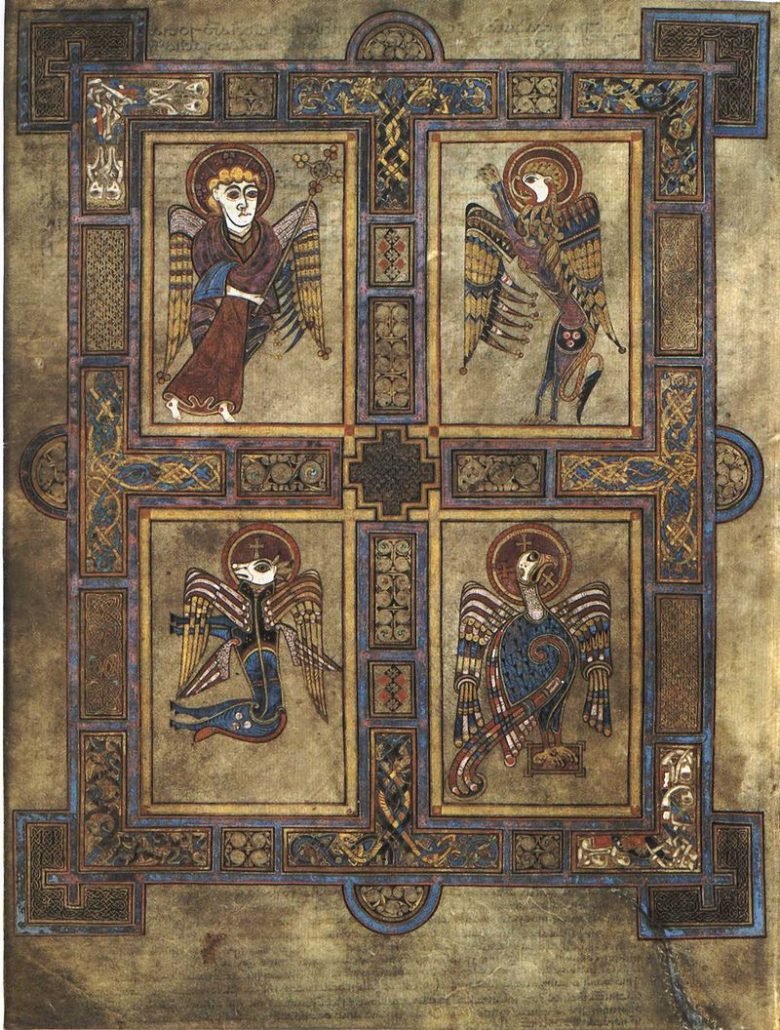
Folio 27v contains the symbols of the Four Evangelists (Clockwise from top left): a man (Matthew), a lion (Mark), an eagle (John) and an ox (Luke)
The Long Room: This is the main chamber of the old library of Trinity College, Dublin. At nearly 65 metres (213 feet) in length, it is filled with 200,000 of the Library’s oldest books and is one of the most impressive libraries in the world; it was built between 1712 and 1732.
Marble busts line the Long Room, a collection that began in 1743 when 14 busts were commissioned from sculptor Peter Scheemakers. The busts are of the great philosophers and writers of the western world and also of men (yes, all men) connected with Trinity College Dublin – famous and not so famous.
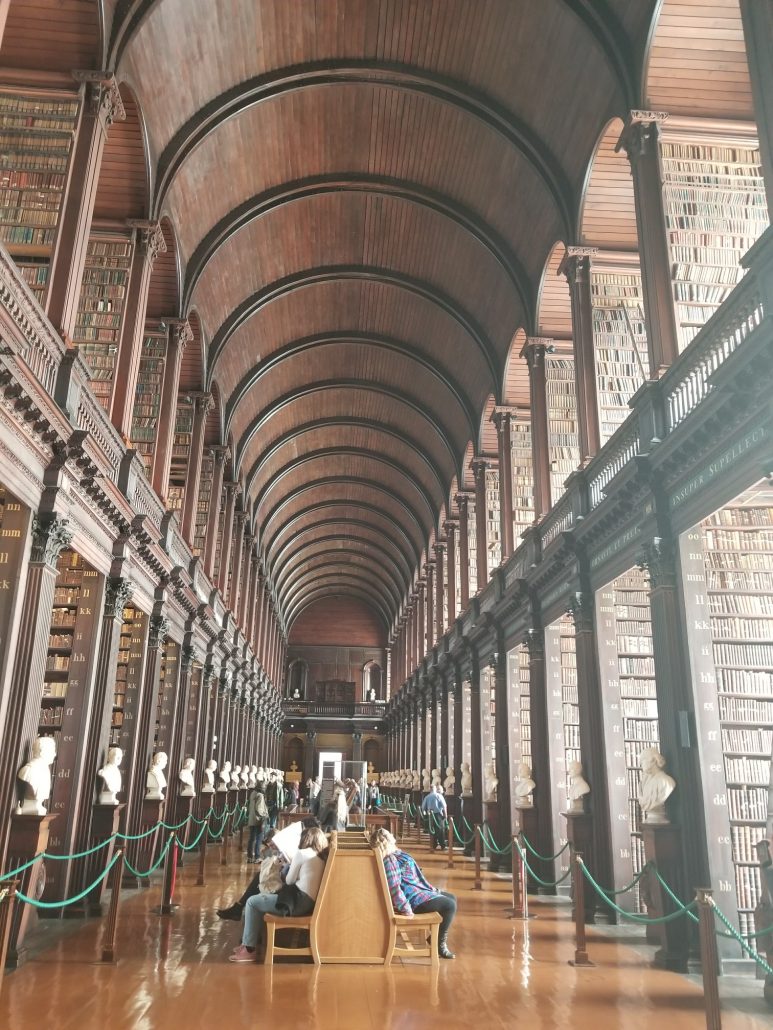
The Long Room, Trinity College Dublin

The entry to the Long Room

My bestie and I in front of the bust of the great philosopher, Socrates
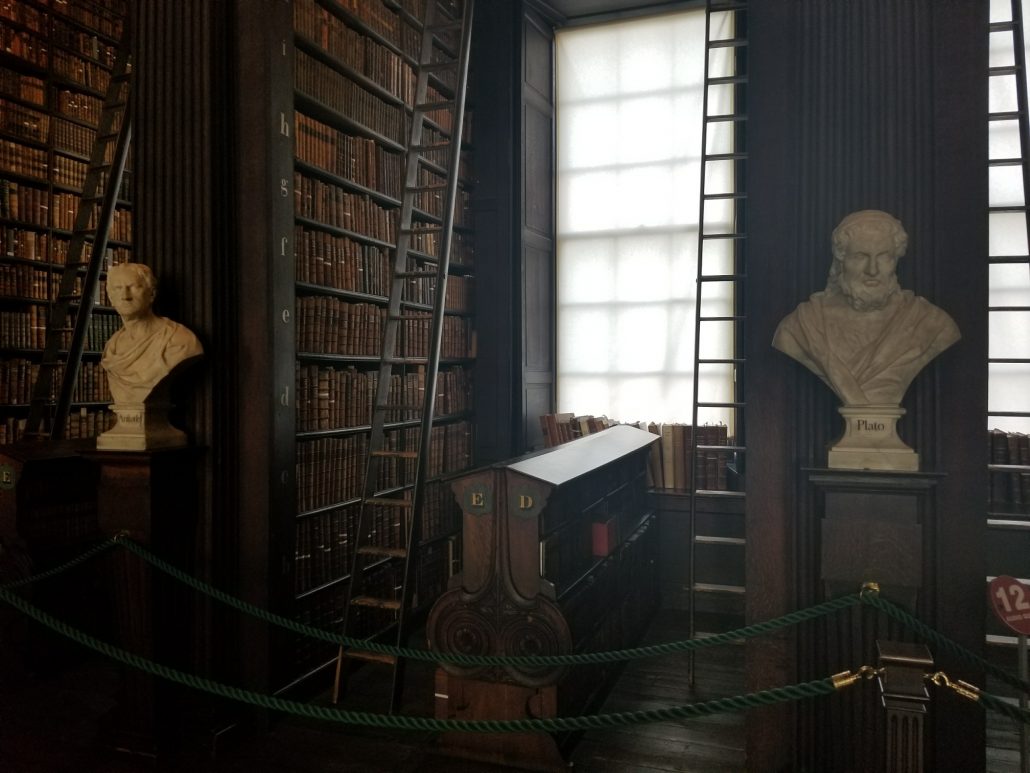
The busts of Aristotle and Plato with some of their manuscripts and works
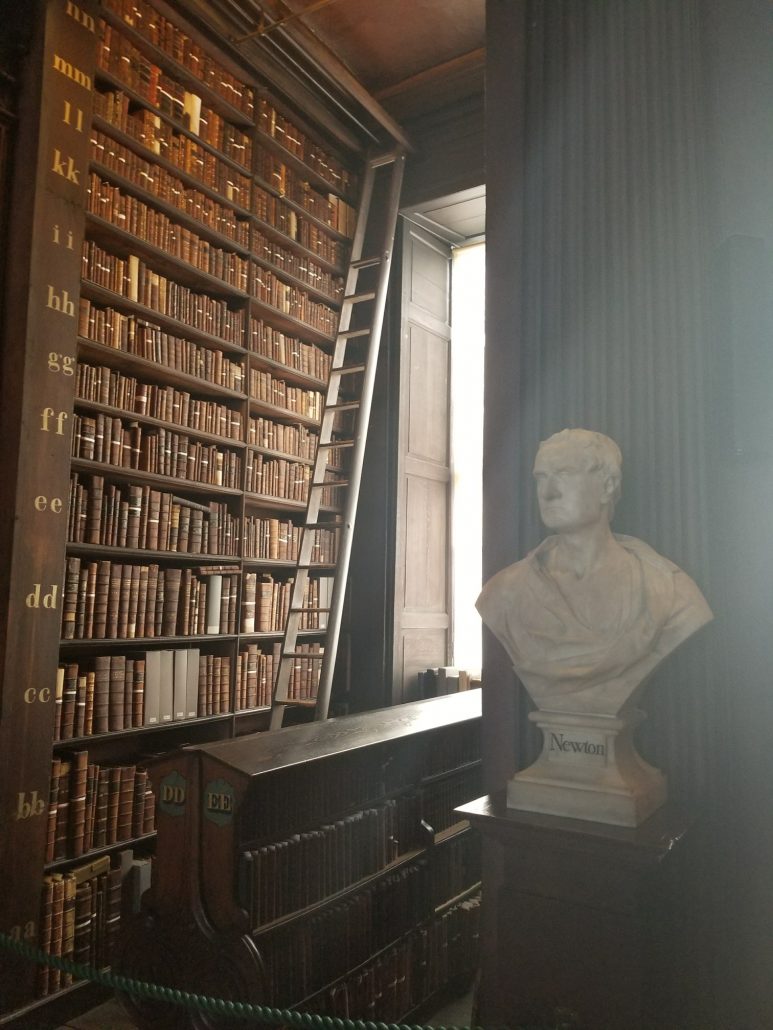
The bust of Isaac Newton
Other treasures in the Long Room include one of the few remaining copies of the 1916 Proclamation of the Irish Republic which was read outside the General Post Office on 24 April 1916 by Patrick Pearse at the start of the Easter Rising. The harp is the oldest of its kind in Ireland and probably dates from the 15th century. It is made of oak and willow with 29 brass strings. It is the model for the emblem of Ireland.
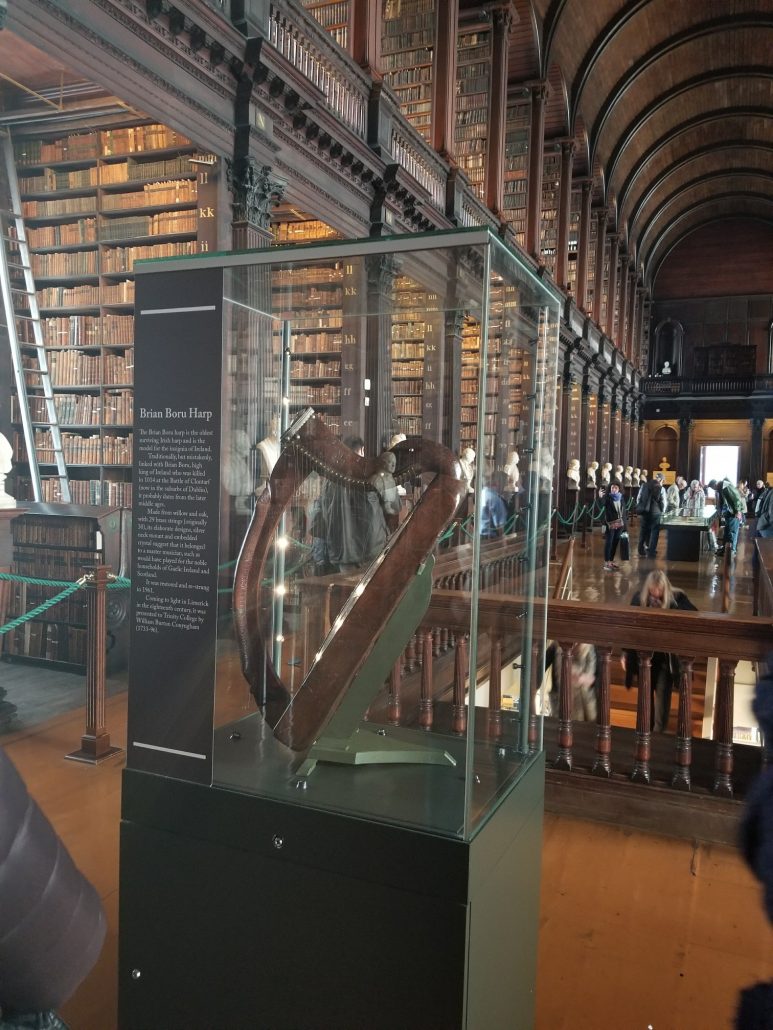
The oldest Harp in Ireland
4. Dublin Castle: Erected in the early 13th century on the site of a Viking settlement, Dublin Castle served for centuries as the headquarters of English, and later British, administration in Ireland. In 1922, following Ireland’s independence, Dublin Castle was handed over to the new Irish government. It is now a major government complex and a key tourist attraction.

Dublin Castle
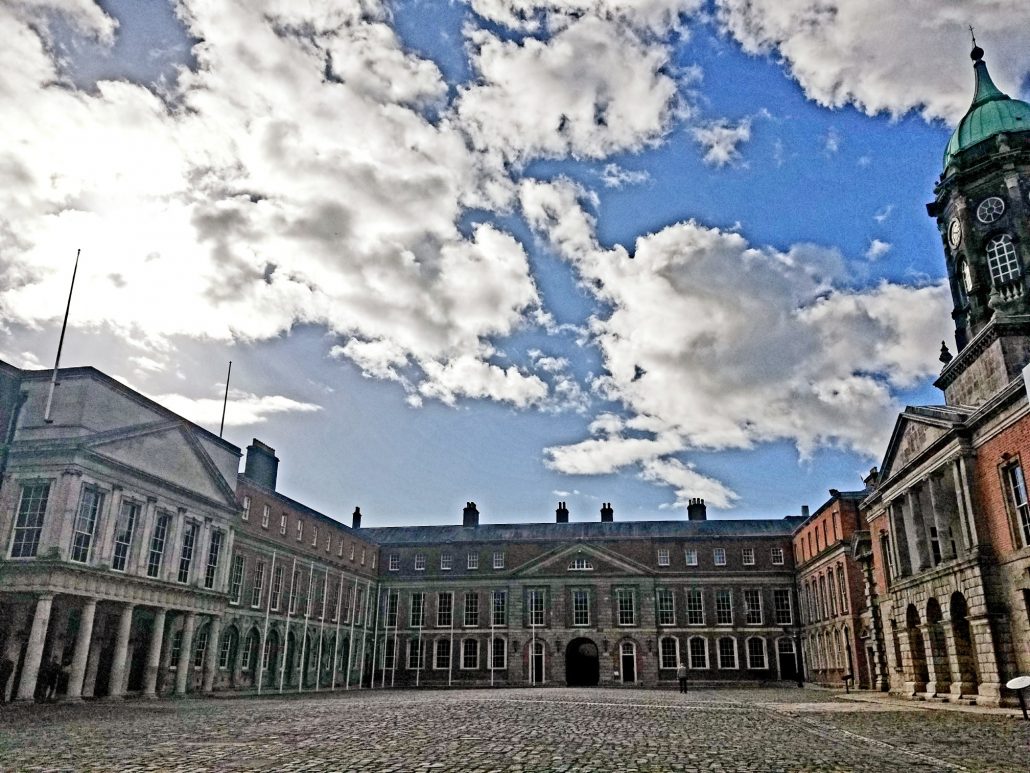
Dublin Castle grounds
5. St. Patrick’s Cathedral: As the largest cathedral and one of the most important pilgrimage sites in Ireland, Saint Patrick’s has been at the heart of Dublin and Ireland’s history and culture for over 800 years, founded in 1191. It is the National Cathedral of the Church of Ireland drawing chapter members from each of the twelve dioceses of the Church of Ireland. Saint Patrick was a fifth-century Romano-British Christian missionary and bishop in Ireland known as the “Apostle of Ireland”. According to Wikipedia, he is the primary patron saint of Ireland, along with saints Brigit of Kildare and Columba. He is also venerated in the Anglican Communion, the Old Catholic Church and in the Eastern Orthodox Church as equal-to-the-apostles and Enlightener of Ireland.

St Patrick’s Cathedral Dublin, Ireland
6. Beoga Concert at the National Concert Hall in Dublin: According to Beoga’s website, Beoga (Irish for ‘lively’) has been in existence for 15 years and they have produced five critically acclaimed albums, been shortlisted for a Grammy, performed with the Ulster Orchestra at the BBC Proms, and been presented with certificate of Congressional Recognition from the US House of Representatives. They had a recent collaboration with Ed Sheeran that brought them to another level and a new audience. Beoga co-wrote Sheeran’s massive hit ‘Galway Girl’, and they were featured on another track on his album Divide, ‘Nancy Mulligan’.
Beoga’s sound is firmly rooted in the Irish traditional genre, and they incorporate other elements, from bluesy riffs to Astor Piazzola-style jazz, and even a raunchy New Orleans jamboree vibe. The Wall Street Journal referred to them as, ‘the most exciting new traditional band to emerge from Ireland this century.’ Check out a video sample of Beoga’s great music here and part of the concert I attended here.
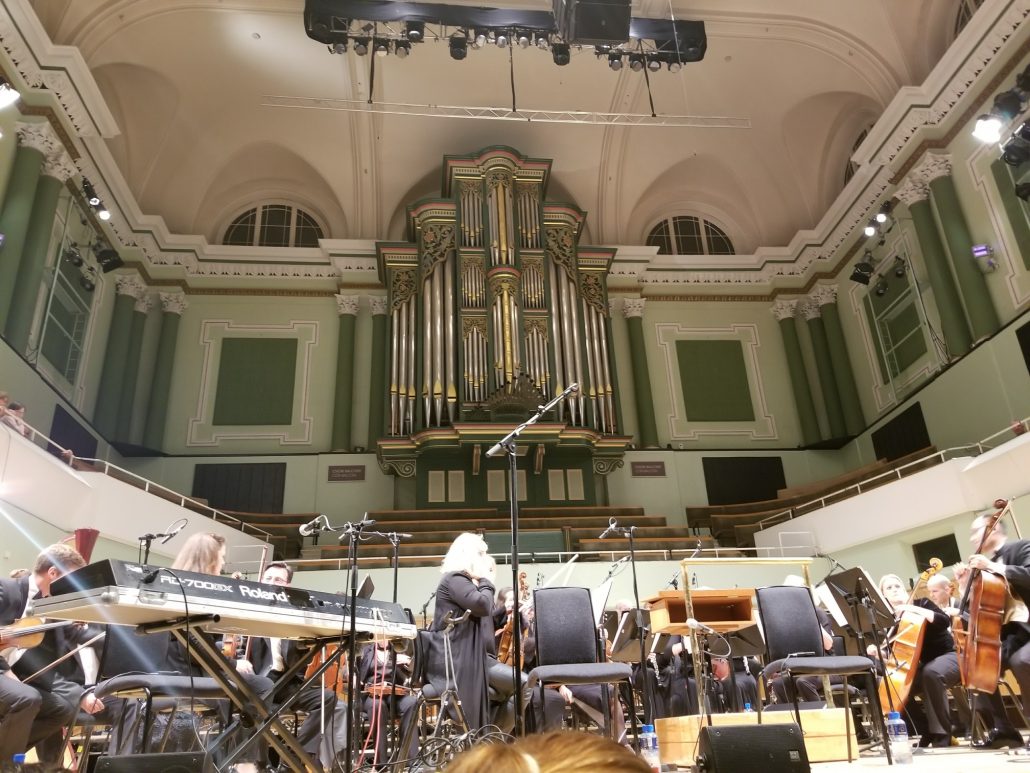
The National Concert Hall Dublin Orchestra on October 4th, 2017 preparing to perform with Beoga
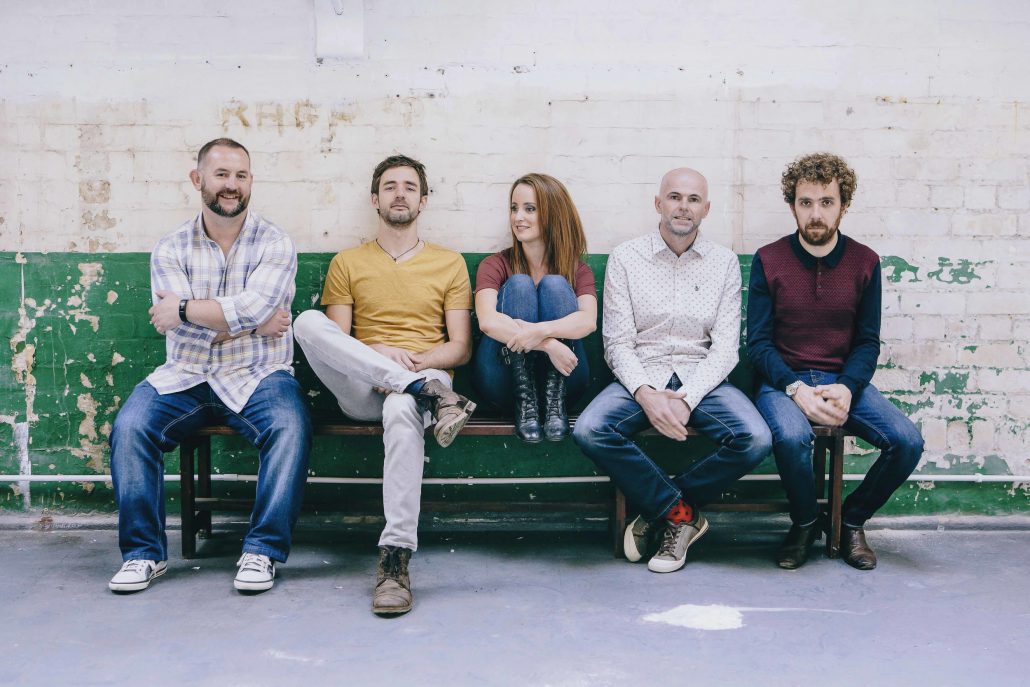
Beoga
7. The Doors of Dublin: Dublin is known for colourful doors scattered around the city. During the early 18th century, a time of prosperity in Dublin, elegant new Georgian homes were constructed beyond the walls of the original medieval town. There were strict rules by the developer and so the Georgian style exteriors of these townhouses had to abide by very specific architectural guidelines. So, in order to set themselves apart, the residents of Georgian Dublin started painting their front doors different colours and patterns to help individualize their homes. There are some myths surrounding the Doors of Dublin–the most prominent being that the doors came as a result of the Irish citizens defying orders to paint their doors black to mourn the death of Queen Victoria in 1901. The Doors of Dublin are refreshing and they stand out in a city that, at first pass, appears to be somewhat dull and grey.
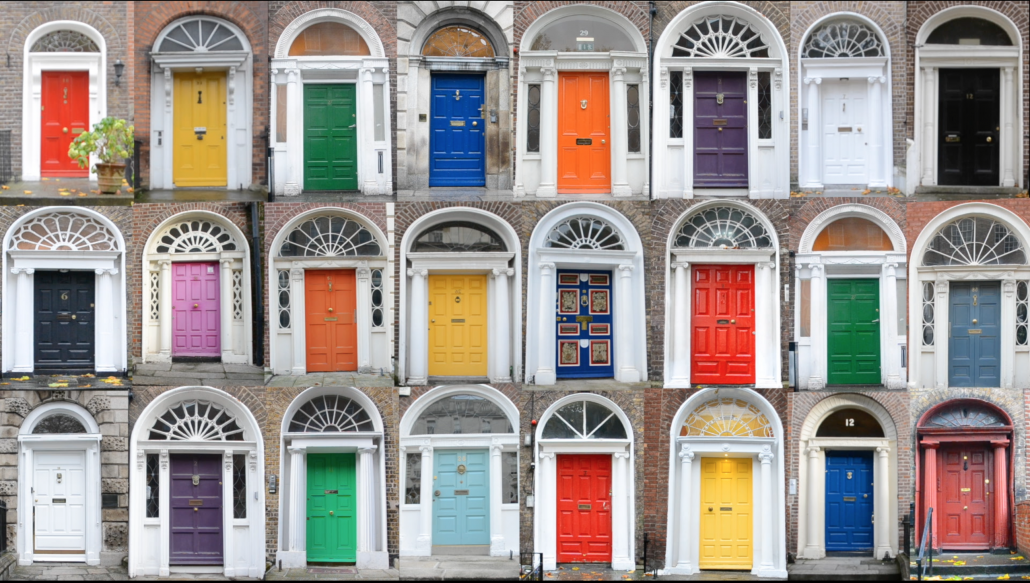
The Doors of Dublin – Photo credit: Victoria Roren
8. Nando’s Chicken: Nando’s chicken is not indigenous to Dublin or Ireland. I just really love Nando’s Chicken with Peri Peri sauce–my first experience was in London in 2008 and I have been a fan ever since. Peri Peri is what makes Nando’s chicken so spectacular. Mozambique’s rich soil and sweltering heat provides the optimal conditions for the African Birds Eye Chili which is the main ingredient used to make Peri Peri. For centuries the people of southeast Africa have used Peri Peri to spice up food. Portuguese explorers arrived and added lemon and garlic turning Peri Peri into a global spice. Nando’s was started by two friends in Rosettenville, Johannesburg in 1987–it is now a major global chain. Nando’s chicken (along with their many side dishes) is so delicious and the Peri Peri sauce speaks to my soul. Nando’s opened its first United States location in 2008 in Washington, D.C. Nando’s currently has 40 restaurants in the US: 12 in Illinois; six in Washington, D.C.; 13 in Maryland; and nine in Virginia (sadly, none in Massachusetts).

Nando’s 1/2 Chicken with Chips, Coleslaw and Roast Corn
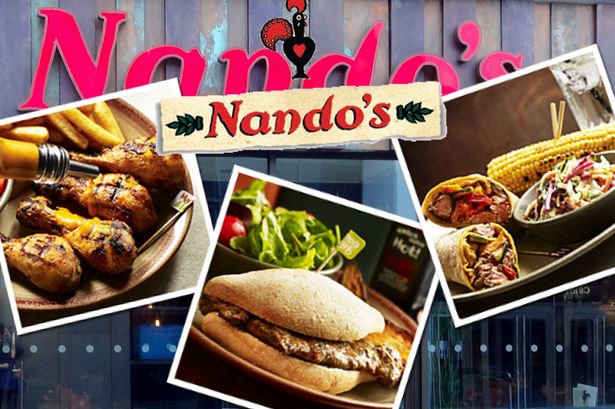

9. Howth: Howth is an outer suburb of Dublin located on the Peninsula of Howth Head about 9 miles from Dublin city. We walked the Cliff Pathloop from the Howth DART train station through the village past the Pier up to the nose of Howth and the Cliff Tops, then the Baily Light House comes in view, then back through the village and to the station (forming the loop). Howth is a popular area for bird-watching, sailing, and fishing–it is very popular with anglers.

Howth, Ireland

Howth at Sunset-Photo Credit: Giuseppe Milo Photography
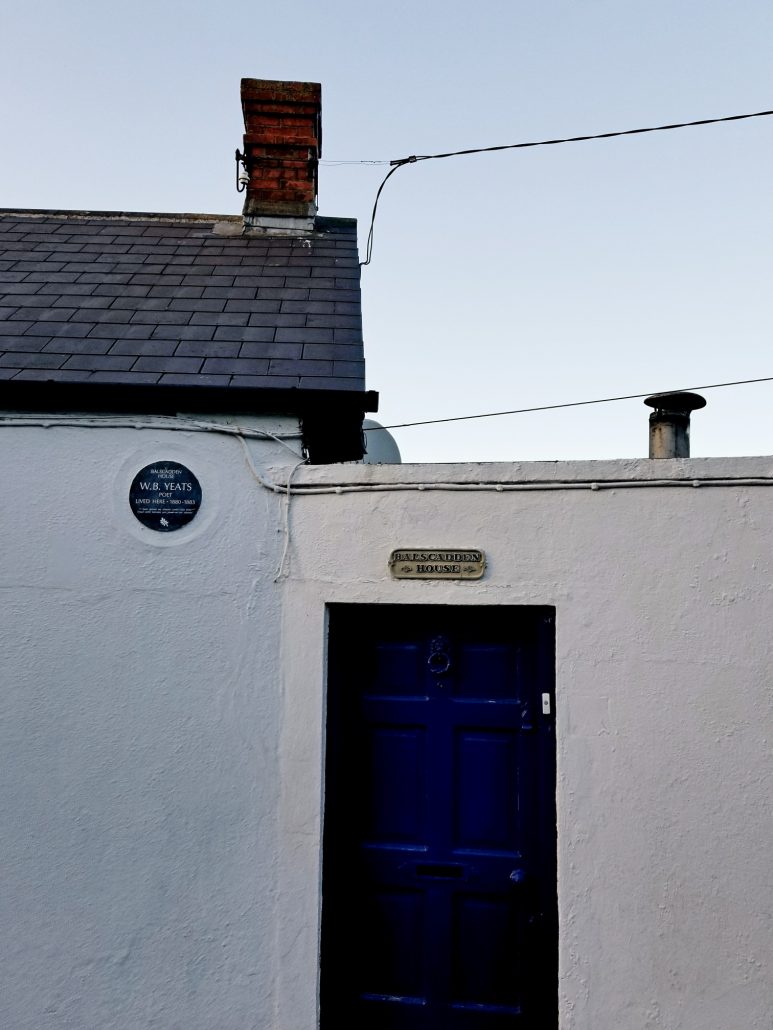
Along the Cliff tops of Howth, a home that WB Yeats resided in for 3 years (between 1880-1883).

I was not prepared for climbing the cliff tops of Howth (check out my shoes)–but I did it any way (LOL!)
10. Shopping at Brown Thomas Department Store: Brown Thomas is the Saks Fifth Avenue of Ireland. Brands like Gucci, Valentino, Saint Laurent, Fendi and even Chanel are there. There are also many Dublin, Irish, and European brands there and they have many non-luxury brands as well. The great thing about shopping as an expat there is the unparalleled pleasure of duty free.

Checking out the merchandise at Chanel in Brown Thomas
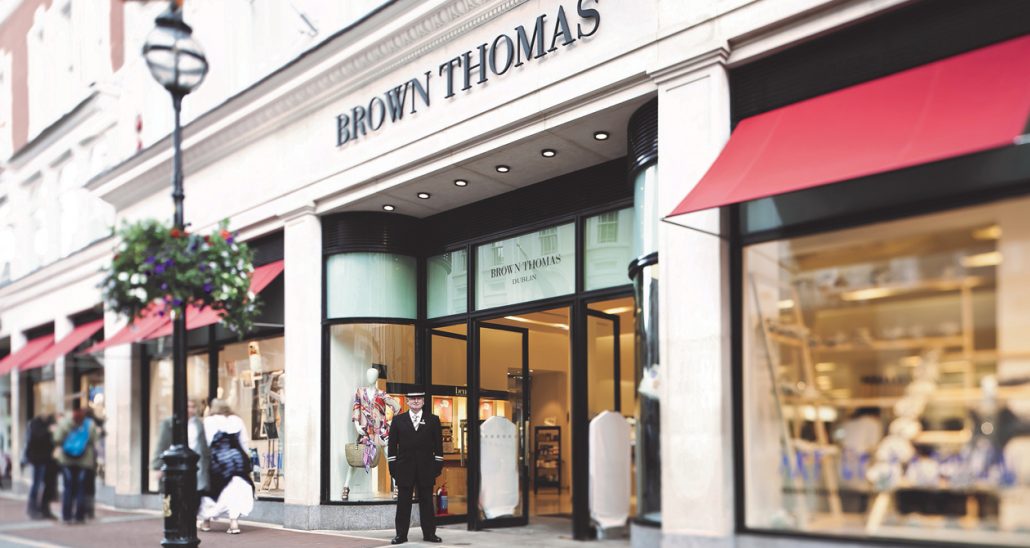
I had such a lovely time in Dublin, thanks to my wonderful friend of life, Udo. Thank you for taking the time to show me your city–Dublin can now be added to our list of infamous stumping grounds. I hope to visit Dublin again as well as other parts of Ireland in the future.
Please share your thoughts and your Dublin faves in the comment section below.
Love,
Chichi







Fun times and memories with my bff. Looking forward to more trips and visits!
I know…me too. I had such a wonderful time. 😘